A Proven 12-Step Plan for Launching Your Own Botox Clinic

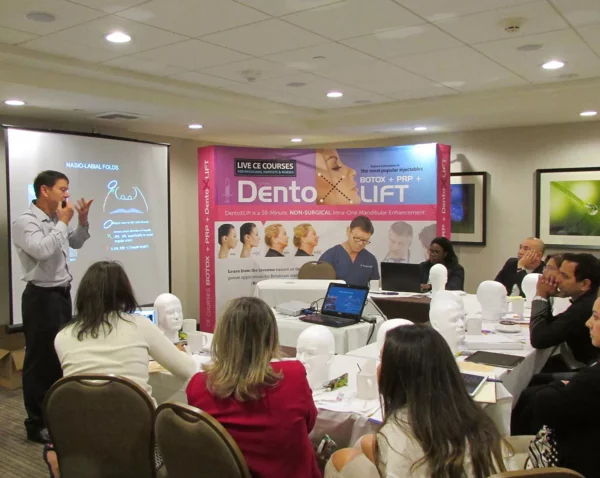
To learn how to inject Botox safely and successfully, you need to attend a reputable training program.
A well-organized and executed business plan is essential for opening a Botox clinic. If you want to start a successful practice, follow these ten guidelines.
1. Get the right credentials and education
Before you can legally inject Botox, you must first finish the necessary training and obtain the necessary certifications. Taking a Botox training course and getting a medical license or certification in your state are also necessary steps. Being trained to inject Botox safely and effectively requires enrolling in a respected training program. You can keep up with the most recent developments in your industry by participating in ongoing training and education courses.
Instructions for the injection of Botox are now being made available to medical practitioners. Courses can either be completed online at https://dentox.com/all-courses/ or in-person with real patients at https://dentox.com/live-courses/. Get the knowledge necessary to boost the patient’s quality of life by enhancing their overall look, their well-being, and their vision.
2. Learn the requisite laws and regulations
Become acquainted with the legal and regulatory framework that governs the use of Botox in your area and make sure you understand it. Be sure that you are in compliance with all of the criteria for documents, licenses, and permissions.
3. Establish a business network
Network with other medical professionals, such as dermatologists, plastic surgeons, and primary care physicians, who may recommend patients to your practice. These medical professionals might be able to refer patients to your office. Building Professional connections can be made through participation in seminars, local events, or professional associations.
4. Make an investment in top-notch tools and supplies
It is important to be prepared to inject Botox, so stock up on sterile needles, syringes, and other medical supplies. Having access to high-quality medical supplies and equipment is important for patient care and satisfaction.
5. Determine the location you will use
It is essential to the success of your Botox practice that you select the appropriate site. Consider how accessible it is, how noticeable you will be, and how much rivalry there will be in the area. You should search for a site that is conveniently accessible to the people who make up your target market. This could be a medical office building or a bustling retail complex. Visibility is another crucial factor to consider because you want prospective customers to be able to quickly locate and identify your clinic. Moreover, conduct research into the competition in the community to ascertain whether or not there is sufficient demand for your services and whether or not you can separate yourself from other service providers.
6. Acquire all required licenses and permits
It is crucial to make sure that you have all of the necessary licenses and permissions in order before starting your Botox clinic. This will vary based on both the location of your business and the particular services that you intend to provide. Verify your credentials with the appropriate medical board in your state to see if you are allowed to provide Botox injections. Also, it is possible that you will need to acquire a business license and register with the health authority in your area. Before you start your own practice, you need to be sure that you have done the necessary research and that you are in full compliance with all of the requirements. Visit https://dentox.com/medical-dental-and-nursing-state-boards/ for a list of state medical boards and their contact information.
7. Get the necessary equipment and supplies
Assuming you have your licenses and permits in order, the next step is to stock up on the equipment and supplies you’ll need to open for business as a Botox specialist. Needles, syringes, alcohol swabs, and Botox injectables are all examples of medical supplies. You’ll also need to buy things like a treatment table, a medical trolley, and some cupboards to put things in. If you care about your customers’ well-being and pleasure, you should invest in high-quality tools and supplies. If you want to have access to cutting-edge tools and equipment, it may be worthwhile to partner with a dependable provider.
8. Offer outstanding care to patients
Focus on providing excellent treatment for patients if you want to have a solid reputation. Offer discussions, listen to patient’s problems, and explain their next steps carefully. If patients are pleased with their care, they will tell others about it.
9. Be abreast with developments in your field
Learn as much as you can about cutting-edge science, practices, and discoveries in the field of aesthetic medicine. Improve your knowledge and abilities by participating in seminars, workshops, and online webinars. You need to continually learn new things if you want to stay competitive in your field.
10. Always be compliant and retain accurate records
Set up a reliable method of documenting all aspects of a patient’s medical care, from initial consultation to discharge. Respect privacy rules, data protection legislation, and professional ethics to maintain patient confidence and privacy.
11. Think about a marketing plan

Create a comprehensive marketing plan to attract and retain clients. Consider search engine optimization (SEO), online and social media advertising, and in-person events as examples of promotional strategies.
Develop an all-encompassing marketing strategy for gaining and keeping customers. Think about SEO (search engine optimization), internet and social media marketing, and local promotions. Emphasize your knowledge, precautions taken and successful past encounters with patients.
12. Prepare a business plan
Make a thorough business plan that includes your vision, mission, target audience, pricing, promotional initiatives, and projected earnings. A well-thought-out plan can serve as a guide for making crucial decisions and, if necessary, can help you convince investors to back your venture.
It’s important to remember that your Botox marketing won’t produce results overnight. Maintaining a high standard of excellence and putting patient safety first will draw in a steady stream of new clients to your practice.
Do Podiatrists Have the Authority to Prescribe Botox?
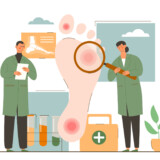

Podiatrists are medical professionals that focus on the diagnosis, treatment, and prevention of foot and ankle conditions.
Do podiatrists have the legal right to issue prescriptions for Botox? Are you interested in learning more about Botox injections and their possible advantages for foot-related conditions? This piece will dig into the specialty of podiatry and discuss whether or not podiatrists are permitted to give patients Botox.
Podiatry and Botox: What You Need to Know
To fully grasp the connection between podiatry and Botox, one must first know the field’s place in modern medicine. Podiatry, also referred to as podiatric medicine, is a branch of internal medicine that focuses on diagnosing, treating, and preventing diseases of the foot, ankle, and lower limbs. Podiatrists are medical experts who specialize in treating and preventing problems with the feet. They are essential to the general well-being of the foot.
Let’s learn more about Botox and why it’s important in podiatry. Botox, which is made from the bacterium Clostridium botulinum, has become immensely popular due to its wide range of uses in the cosmetic and medical fields. Although Botox is best known for its cosmetic benefits, it has also been shown to be effective in the treatment of a number of medical issues.
Botox has shown promise in other medical fields, and podiatry is no exception. The ability to reduce foot problems, such as those caused by muscle stiffness and excessive perspiration, is a major benefit. Muscle spasticity can cause discomfort from illnesses like plantar fasciitis and Achilles tendinitis, but Botox injections can help relax the muscles to alleviate the pain and restore movement. Additionally, hyperhidrosis, a condition characterized by excessive foot perspiration that can cause discomfort and fungal infections, responds well to Botox treatment.
While Botox may help with some foot problems, it is not a panacea. Patients should always check with a licensed podiatrist before deciding whether or not Botox treatment is right for them because every case is different. Podiatrists are in a prime position to assess the appropriateness of Botox injections and provide individualized treatment strategies due to their extensive knowledge of foot anatomy and biomechanics.
Professional Responsibility for Podiatrists
To put it simply, podiatrists are medical doctors who focus on the lower extremities, specifically the feet and ankles. They have the knowledge and skills to treat a wide variety of foot problems, thanks to their extensive training and education. Their scope covers:
- Diagnosis and Treatment: Conditions affecting the foot and ankle, from the relatively minor (bunions, ingrown toenails) to the significantly more serious (fractures, nerve disorders), are all within the scope of practice for podiatrists.
- Surgery of the foot and ankle: These specialists have received training in interventions to treat deformities, alleviate pain, and reclaim function.
- Wound Care and Diabetic Foot Management: Podiatrists are medical experts who focus on the feet and use cutting-edge methods to treat and prevent foot wounds, especially in diabetic patients.
- Sports medicine: They offer specialized treatment for foot and ankle injuries in athletes, assisting with their recovery, helping them avoid further injuries, and enhancing performance.
- Orthotics and biomechanics: Podiatrists examine biomechanical problems and apply orthotic devices to correct imbalances, enhance gait mechanics, and relieve pain.
Botox and its Potential Uses in Podiatry
In recent years, the medical benefits of Botox for podiatry have received as much notoriety as its cosmetic uses. It shows promise in the treatment of a range of foot disorders. Injections of Botox have been useful for treating:
- Feet hyperhidrosis: When you sweat a lot more than usual.
- Plantar Fasciitis: Heel pain brought on by plantar fascia inflammation
- Morton’s Neuroma: Thickening of tissue around the nerves leading to the toes
- Toe Deformities: Deformities of the toes, such as hammertoes and claw feet
- Chronic Ankle Pain: Constant discomfort around the ankle area
There are a number of potential advantages to using Botox in podiatry:
- Non-surgical Alternative: A non-invasive replacement for surgery
- Localized Treatment: Direct application to the site of the problem
- Temporary Relief: Effects provide only transient relief and last for several months.
- Enhanced Mobility: A better range of motion and general quality of life for the patients
Numerous case studies and patient testimonials have supported the effectiveness of Botox treatments in podiatry. Patients with persistent plantar fasciitis who received Botox injections noticed a substantial decrease in discomfort and an increase in function, according to a study published in the Journal of the American Podiatric Medical Association.
Considerations in Law and Regulation
To better understand the legal and regulatory issues that affect podiatrists when they prescribe Botox, let us look at the most salient points:
The Constitutional and Judicial Underpinnings
Podiatrists can only prescribe within the limits set by their home jurisdictions’ legal systems. Podiatrists may be able to prescribe medications independently in some areas, while in others they may need to be under the supervision of a medical doctor. Assuring compliance and protecting patients requires a thorough comprehension of the applicable legal framework.
Different Regulations
The scope of practice for podiatrists in terms of prescription authority varies widely between jurisdictions. While some jurisdictions may give podiatrists unrestricted authority to prescribe Botox, others may impose restrictions or mandate additional credentials. Podiatrists who want to stay within the law should study the rules that apply to their state or province of practice.
The best way to get accurate information right now is to get in touch with the medical board in your state. To locate the medical board in your state and their contact information, go to https://dentox.com/medical-dental-and-nursing-state-boards/.
Collaboration and Referral

In areas where podiatrists’ ability to prescribe medications is constrained, collaboration and referral networks become extremely crucial.
Collaboration and referral systems become especially important in nations where podiatrists’ prescribing authority is limited. To provide the best care possible for their patients, podiatrists sometimes work with other medical specialists like physicians and dermatologists. Podiatrists can refer their patients to the most qualified specialists through these networks.
Podiatrists who take part in specialized training and certification programs are better equipped to deliver Botox. Dentox can give you the education you need to improve both the quality of care you give your patients and the profitability of your practice. Online Botox training may be found at https://dentox.com/all-courses/botox-training/, while in-person training with live patients can be found at https://dentox.com/live-courses/.
When Should You Return to Working Out after Getting Botox?

The question “When to workout after Botox?” is among the most frequently asked by those considering the treatment. In the United States, Botox has surpassed all others as the most popular cosmetic procedure thanks to its effectiveness in delaying the visible effects of aging.
However, there are safety measures you should follow after getting Botox injections, like resting for 24 hours and abstaining from physically demanding activities. We have got you covered if you are curious about weight training and working out after getting Botox.
Just what is Botox?

Botulinum toxin, also known by the brand name Botox, is a neurotoxin that can temporarily relax muscles, resulting in less wrinkling.
Botox, which stands for “Botulinum Toxin,” is a neurotoxin used to temporarily relax muscles and thus reduce wrinkles. It is commonly used for both aesthetic and therapeutic purposes. Botox does not start showing its cosmetic benefits right after injection but rather over the course of a few days.
During the initial days and weeks after receiving Botox, it is essential to allow the treatment to take effect and avoid doing anything that might compromise the results.
Injecting Botulinum Toxin into a muscle causes temporary paralysis because it blocks a nerve signal that normally causes the muscle to contract. As a result of the muscle relaxation it induces, Botox is frequently used for cosmetic purposes, as it can lessen the appearance of wrinkles and prevent the formation of new ones.
Botox has medical applications beyond its more well-known cosmetic ones, including the treatment of migraines and temporomandibular joint disorders.
When Should You Return to Exercise After Getting Botox?
Although it is commonly recommended to wait at least 24 to 48 hours after Botox injections before working out, it is essential to consult with your healthcare provider or the expert who administered your Botox to get individualized advice.
After getting Botox, will I be able to continue lifting weights?
The effectiveness of Botox settlement or the likelihood of bruising at the site of injections could be negatively impacted by exercises involving heavy weight lifting and severe resistance training, which can increase blood pressure and blood flow.

After having Botox, facial expressions and physical activity can cause the substance to migrate from the injected muscles to unexpected locations.
Facial expressions and physical exertion could have an effect on the injected muscles after receiving Botox.
What Side Effects Does Working Out After Getting Botox Have?
Exercising too soon after a Botox injection can negatively affect the procedure’s effectiveness and increase the risk of complications. Some of the potential negative outcomes of exercising soon after receiving Botox include the following:
Botox migration: Engaging in strenuous physical activity, particularly those that call for repeatedly expressing or moving your face, may cause the Botox to migrate to unanticipated areas. Muscle wasting or paralysis in undesirable areas may consequently affect your appearance.
Reduced effectiveness: Due to the increase in blood flow that comes from exercise and strenuous physical activity, Botox may not be as effective. The neurotoxin requires some time to take effect in the desired muscles before it can produce the desired cosmetic results. Strenuous exercise soon after treatment may impede this process, diminishing the outcome.
Bruising or swelling: Intensive exercises, such as weightlifting or heavy sports, may elevate blood pressure and increase the likelihood of bruising or swelling at injection sites. This may affect the final result by elongating the recovery time.
Pain: Physical activity following Botox injections may result in pain or uncomfortable sensations at the targeted sites. Because of the increased strain and blood flow, any possible post-injection adverse effects, such as irritation or inflammation, might grow increasingly serious.
Maintaining an active lifestyle is vital to general health, but it is also essential that you follow the recommended waiting period before exercising after Botox treatment. You can get the best results from your Botox treatment while also continuing your regular exercise routine if you give the Botox time to settle and follow your healthcare provider’s directions.
Dentox is a course in which medical professionals are instructed in the safe and effective administration of Botox. Dentox can help you grow your business and provide better care to your present clientele.
It’s never too early to start taking a course from experts in the field of botox. If you put in the time to learn, you might ultimately be able to perform marvels for every person who walks through your door. In addition to the live courses offered at https://dentox.com/live-courses/, online Botox training is available at https://dentox.com/all-courses/botox-training/.
Improving Your Smile Makeover Outcomes With Botox® Injections


Botox® Cosmetic, a neuromodulator approved by the Food and Drug Administration, is commonly used to temporarily lessen the appearance of dynamic wrinkles and fine lines.
How Botox® injections can reduce the appearance of “gummy smiles” and wrinkles around the lips. Minimizing the appearance of fine lines and wrinkles is often the perfect complement to cosmetic dentistry and can have a profound impact on the overall youthfulness of a patient’s smile.
Botox is a fantastic, non-surgical option for those who want to reduce the signs of aging on their faces.
Smile Makeover With Botox
Although these treatments can greatly improve your oral health, they do not do much to improve your outward appearance. Your skin’s suppleness will decrease with age. Fine lines (also known as “smile lines”) appear around the mouth and elsewhere as a result of aging, UV exposure, gravity, and dehydration. Eventually, they will become deeper wrinkles that age your appearance.
Changing the shade of teeth, fixing chips and cracks, filling in gaps, and aligning crooked teeth are all important, but restoring volume to the gums and lips is just as crucial. While Botox injections on their own can have a rejuvenating effect, the results from combining them with cosmetic dental work are truly remarkable. A whiter, straighter, and brighter smile, along with anti-wrinkle treatments and lip fillers, can remove years from your appearance.
FDA-approved Botox® Cosmetic is widely used to temporarily reduce the look of dynamic wrinkles and fine lines. These lines are a result of both the aging process and the repeated folding and squishing of the face. Botulinum toxin type A, the major active component of Botox® Cosmetic, functions by momentarily inhibiting nerve and muscle signals. The muscles close to the injection site relax as a result and stop contracting. Botulinum toxin type A functions by momentarily obstructing impulses from the nerves to the muscles. This results in the muscles close to the injection site relaxing and ceasing to contract. As a result, existing folds relax and fade, and no new lines emerge.
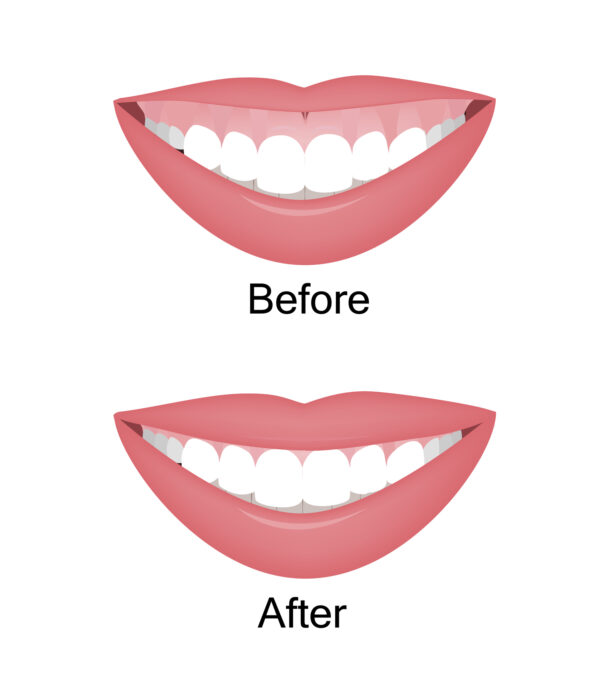
A “gummy smile,” one in which there is an abnormally large amount of gum tissue, can be addressed with Botox® injections.
By relaxing the upper lip and reducing how much of the gum line is visible when a patient smiles, Botox® injections can diminish the appearance of a “gummy smile,” which is a smile characterized by excessive gum tissue. Additionally, Botox® injections can lessen the pain in the jaw joints brought on by TMJ dysfunction.
While the majority of patients who get a smile makeover are delighted with the results, some become dissatisfied due to the persistence of wrinkles in those areas. Combining Botox® injections with cosmetic dental procedures like porcelain veneers and teeth whitening can frequently result in a more all-around revitalization. In addition, improving the aesthetics of a patient’s smile and reducing the appearance of wrinkles on the face might have the added benefit of making the patient appear younger.
Finding a skilled injector with a proven track record of delivering great aesthetic outcomes is essential for patients considering Botox® injections as part of their cosmetic dentistry treatment plan. Patients’ safety, comfort, and satisfaction can all be maximized in this way.
Trained medical professionals can inject the right amount of Botox. They are well-versed in the most efficient delivery methods. Dentox is an educational program that teaches doctors and estheticians how to safely and effectively inject Botox.
It is now possible for doctors and nurses to take courses in administering Botox and fillers. Both online and in-person Botox training classes may be found at https://dentox.com/all-courses/botox-training/ and https://dentox.com/live-courses/ respectively. Keeping up with the latest developments in Botox and providing your patients with the finest care possible requires constant learning of new treatments.
Here’s How “TrapTox” Can Improve Your Posture
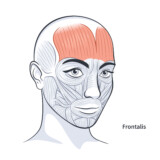
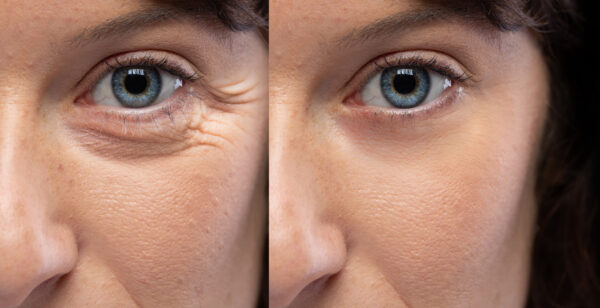
It is well-known that neurotoxins like Botox, Alluzience, Azzalure, and Bocouture can be effectively used to cure face wrinkles like frown lines and crow’s feet.
The use of neurotoxins such as Botox, Alluzience, Azzalure, and Bocouture in facial treatments for wrinkles like the forehead and crow’s feet is common knowledge. The FDA has also green-lighted their use for halting migraines and reducing sweating under the arms. Off-license practitioners are also using neurotoxins to treat posture, and the practice is gaining popularity as more and more people share videos about it on TikTok under the hashtag #TrapTox.
Injecting a product like Botox into problem areas of the body can help relieve postural issues by relaxing the targeted muscles. The trapezius muscle (or ‘trap’) is the most commonly targeted muscle when using neurotoxins for postural purposes, according to scientific literature. Many people refer to this procedure by the name “TrapTox” or “Trap Botox” when discussing it online.
What exactly does the treatment entail, though?
In what ways can “TrapTox” improve one’s posture?
Simply put, the procedure involves working on the muscles in your neck and shoulders, which causes you to stand up straighter because it is harder to continue slouching and, as a bonus, can result in a longer-looking neck and more defined shoulders. It is not a brand-new procedure, but few have heard of it; this suggests it is more widely sought after in Asia, where its slimming effect on the shoulders is prized. In this case, however, it seems that better posture is being highlighted as a means of alleviating tension-related pain and enhancing overall appearance.
Many of us spend hours a day slouched over a computer, which contributes to poor posture and the development of chronic pain in the shoulders and neck. Our cell phones are a major issue as well. The strain on the head and neck caused by smartphones is a significant issue that will continue into the future.
Muscle tension and poor posture can both benefit from neurotoxin injections, but only under certain conditions. There are currently no publicly available guidelines regarding how much to inject into these muscle groups or how to distribute doses. A procedure with Botox [or a similar product] for muscular tension could necessitate a minimum of two rounds. You should be selective about where you get injected for posture, as large muscle groups like the trapezius, as well as the upper body and neck, may need quite a significant amount to get the intended result. Given the quantity of neurotoxin required for bilateral administration, this could be an expensive treatment option.
Is ‘TrapTox’ appropriate for anyone?
It is ideal for people whose trapezius muscles are overly developed and who experience pain as a result of their habitual hunched posture. Though it can alleviate the distress brought on by these habits, you should know that this is not a permanent solution. It may be unpleasant as it begins to take effect, particularly if you attempt to slouch but are unable to do so.
Like any medical procedure, assessing your condition and discussing the pros and cons of treatment with a qualified professional who has extensive knowledge of the musculoskeletal system is essential.
Only trained professionals who are aware of the particular risks associated with each injection site should administer botox injections. They know how to assess an individual’s Botox needs, administer the right dose, and increase the treatment’s efficacy while minimizing the risk of adverse events.
Dentox simplifies the process of learning how to administer Botox injections, particularly in high-risk areas, to medical practitioners. Sign up for a seminar at one of our many convenient U.S. locations, or join a live, online, or on-demand session instead. You can learn more about our in-person and virtual training opportunities at https://dentox.com/live-courses/ and https://dentox.com/all-courses/botox-training/.
How to Avoid a Spock Brow and Ptosis with Botox Eyebrow Lift Injections
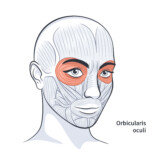
Have you ever wanted to know how to perfect the art of raising one’s eyebrows?
Botox Eyebrow Lifting Procedure
The orbicularis oculi, a muscle responsible for restricting and drawing down the eyebrow, can be targeted for a minimally effective eyebrow lift. Injecting the brow-lowering muscle is a viable treatment option for lateral brow furrows. There is a low risk and few adverse effects associated with injecting 4 units of Botox into the brow’s tail, which will have an effect on the orbicularis oculi muscle superiorly and laterally to provide a slight lift.
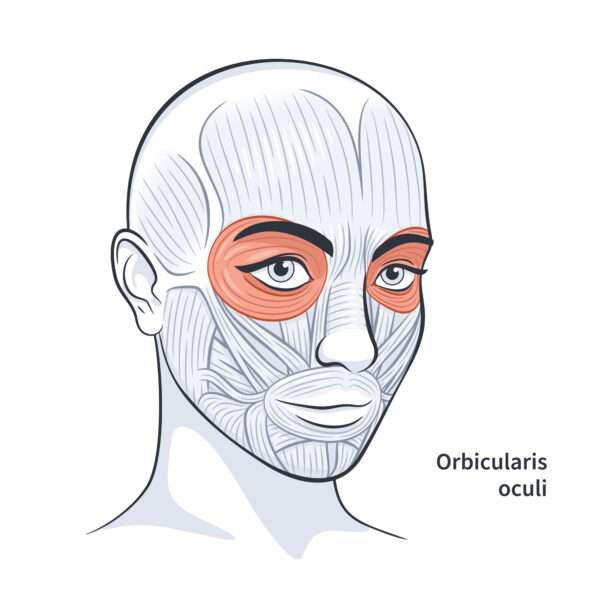
A minimally successful eyebrow lift targets the orbicularis oculi, which restricts and draws down the eyebrow.
More of the orbicularis oculi muscle can be treated by injecting 1 unit medially, underneath the eyebrow, always very superficially, and beneath the lateral part of the eyebrow. This will make it possible to get more of a lift while maintaining a very understated look.
Botulinum toxin injections into the medial frontalis can boost eyebrow lift by making the lateral frontalis muscle more toned at rest. It’s one of the most noticeable ways to show you’re interested.
Avoiding a Spock Brow
Treating the frontalis muscle alone can result in an unnaturally high frown and a lateral brow lift (also known as a “Spock brow”) if the underlying glabellar complex isn’t addressed as well. This is because the corrugator and the procerus are strong enough to depress the brows in most patients, though not all. Even if you are successful in keeping your patient’s brow from furrowing, they could nevertheless wind up seeming irritated even though they are not. This occurs regardless of whether or not the glabellar complex is targeted for treatment, if the medial frontalis is overworked. The root cause is a collapse in the brow’s medial support.
Use the Frontalis Muscle for a Botulinum Toxin Brow Lift
Draw a line beginning at the nasal ala, continuing through the inner corner of each eye, and then up and over the brow bone to the hairline. If you want your eyebrows to curve upward, you need to increase the activity of the frontalis muscle along this line.
Undertreatment of the frontalis can lead to the development of vertical lines across the forehead; to avoid this, it is necessary to sculpt the area of unused muscle so that it lifts without forming lines.
Seeing the direction of the vector you’re trying to amplify is made easier by the line drawn up to the hairline. Then, connect the dot to the location of the brow’s tail with a line, and connect the hairline to a point midway between the two. Botulinum toxin should not be used in this triangular area because it could weaken the lateral frontalis muscle.
To avoid treating other probable frontalis muscle locations as well, it’s critical to rule out any other possibilities. Leaving the frontalis muscle active in its lower third is helpful for avoiding medial brow ptosis. By drawing a line two centimeters out from the orbital ridge, we establish a buffer zone of untreated frontalis. Since lines rarely affect the lower third of the forehead, it is safe to leave this area untreated to support the middle of the forehead.
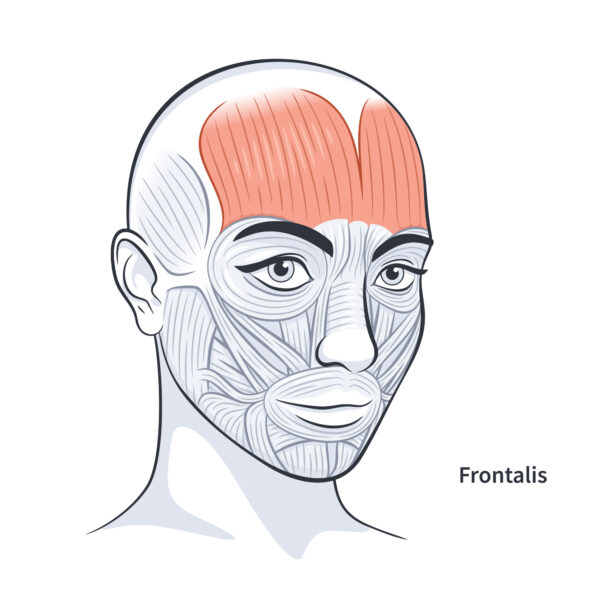
If you want to prevent medial brow ptosis, it’s best to keep the frontalis muscle active only in its bottom third.
If you want to “save” some money and time when using botulinum toxin, it’s a good idea to map out the areas of the forehead without frontalis muscles so you can be sure you’re only injecting the toxin into the muscles you want to affect.
Keeping all of this in mind, the only part of the frontalis muscle that should be left to relax with Botox is the medial part, since the parts needed to support the medial brow and lift the lateral brow have already been excluded.
Spread your injection locations appropriately and maintain symmetry for maximum effectiveness and ideal spread. A dose of 1-2 units of Botox has a circumferential spread or effect on the muscle of 1.5 cm, around the size of a marble. The relative size of the untreated muscle might alter significantly depending on the location of your lateral injections, which will have a significant impact on the relative size of the lift and result in uneven eyebrows that are quite obvious if the face is symmetrical.
By injecting 1 unit of Botox into the bottom of the triangle you formed at the hairline, you can lessen the lift if it is still too noticeable after two weeks. You can get even more lift by treating the orbicularis oculi at your second appointment if you skipped it the first time around in favor of the more visible glabellar and frontalis areas. When you’re treating a patient for the first time, you’re both learning, and it’s normal to make adjustments as you establish a pattern for their unique eyebrow lift and gain familiarity with their face.
Dentox offers a training program where you can learn the ins and outs of Botox administration. In the field of cosmetic and therapeutic injectables, Dr. Howard Katz is without peer as the most knowledgeable and experienced expert trainer. Learn from us, and you’ll be able to give your patients results that will blow away industry norms and leave them speechless.
Attend a seminar in person at one of many locations across the United States, or sign up for a course that is offered live, online, or on demand. Check out https://dentox.com/live-courses/ and https://all-courses.dentox.com/botox-training/ for more details on our in-person and online training opportunities, respectively.
A Guide for Patients Receiving Nose-Tip Botox®
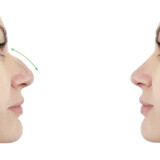
Consider getting a Botox® nose tip lift if you are unhappy with the appearance of your nose’s tip. For a limited time, this non-invasive procedure can lift a drooping nose tip, improving both the aesthetics and balance of your overall profile.
Learn if a Botox nose lift is right for you and what to anticipate from the treatment and its outcomes.
The Benefits of Getting Botox for Your Nose Tip
One of the most common aesthetic complaints among people of all ages is a droopy nose tip, which can be temporarily corrected with Botox.
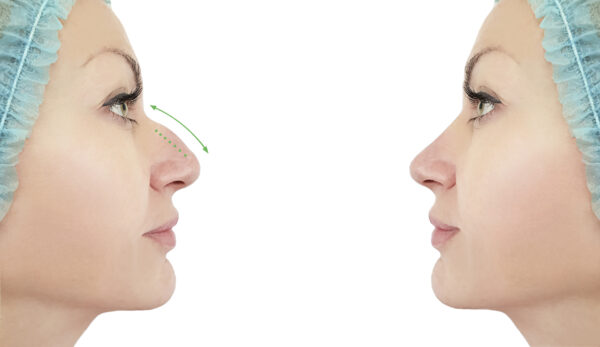
Drooping of the tip of the nose is a frequent cosmetic concern among people of all ages that can be temporarily addressed with Botox.
Moderate drooping caused by stress in the muscle that connects the nose tip to the upper jaw responds well to this treatment. Patients who have problems with their nose’s shape due to a birth defect or injury will not benefit as much from this treatment.
When one’s nose tip drops, why is that?
Constant strain on the depressor septi nasi muscle can cause the nose tip to point downward and stay that way. The mouth and nose are key areas in determining how a person’s face looks and feels at rest, so any disruption to this muscle’s normal activity can have long-lasting effects on how one’s face looks and feels.
Why Do People Get Botox in Their Nose Tip?
Because of Botox’s ability to temporarily relax facial muscles, it can be used to correct drooping of the nasal tip caused by overuse of those muscles. The benefits it offers over rhinoplasty surgery are as follows:
- Effects that are both targeted and subtle; surgical intervention would be unnecessary for such a localized complaint.
- Non-invasive, meaning no cutting or grafting is necessary.
- Rapid — most patients can get back to their regular routine the day after treatment is finished.
- Affordability – Botox is significantly less expensive than surgery.
- Temporary — if you are unhappy with the outcomes, get a follow-up procedure or wait for the medication to wear off.
What to Anticipate From a Botox Treatment for a Sagging Nasal Tip
Read on to find out the typical results of Botox injections into the nasal tip.
How Does a Botox Nose Tip Lift Achieve Its Results?
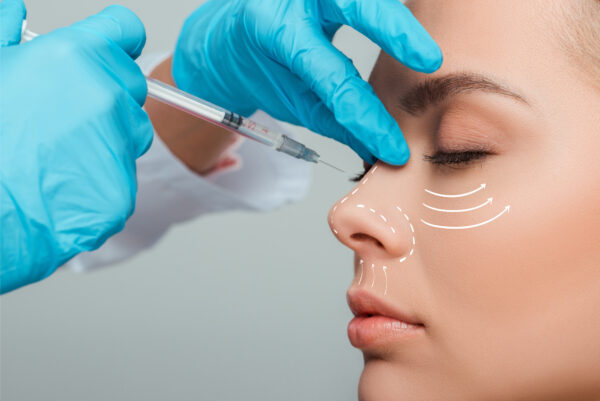
The septi nasi muscle can be relaxed with low-dose Botox injections, which will also raise the nose tip back to its “natural” position.
Botox can be injected into many different muscles on the face, including the depressor septi nasi muscle, which is one of the safest places to do so. Botox injections, even in doses that are relatively low, can relax this muscle and make it possible for the tip of the nose to lift back up toward its “natural” position. Under the bridge of the nose, close to the septum’s base, the injector aims for a number of different injection sites.
How Much Time Will Be Required for the Procedure?
Most people can return to their daily lives after getting a Botox nose lift, which is a quick in-and-out procedure. Be sure to get there early, and give the provider or their assistant some leeway to give you any post-visit instructions you might need.
How Long Do Botox Injections in the Tip of the Nose Last?
The effects of a Botox nose lift typically wear off after three to four months. Once this time period has passed, the drooping of the nose tip may once again be apparent, and further treatment may be required. Results from treatment should be visible (or return) within a week to two at the most.
Is There a Danger of Getting Botox in Your Nose?
Botox occasionally causes patients to experience side effects such as localized pain, itching, redness, and mild swelling around the area of injection. Because issues such as drooping or an asymmetric smile are not very common and are typically the result of injector error, it is essential to collaborate with a medical professional who has successfully completed both advanced Botox training courses and comprehensive training for nose injections.
Do Other Options Exist to Nose-Tip Botox?
The conventional method of rhinoplasty, also known as a surgical nose job, is the traditional alternative to nose tip Botox. However, this is an invasive and potentially dangerous procedure that is unnecessary for minor problems with the nose tip.
While Botox will not permanently correct a drooping nasal tip, it is a quick, low-cost option for those who want to avoid surgery. Botox is one of the most effective ways to lift a drooping nose tip, but it requires repeated treatments every two to three months to maintain its benefits. If you go to a trained professional to have your Botox injections done, you will likely have a positive experience with minimal side effects.
Medical professionals can now attend classes to acquire the skills necessary to inject Botox. Dental detox training is available both online (at https://dentox.com/all-courses/) and in-person (at https://dentox.com/live-courses/), where students can interact with actual patients. By improving your patients’ health, vision, or physical state, you might be able to make a significant impact on their level of fulfillment.
A Detailed Analysis of a Botched Chin Botox® Procedure

Millions of people every year choose less invasive methods of chin augmentation like botulinum toxin type A (Botox®) and dermal fillers over chin implants and plastic surgery.
Botox and fillers are a lot more affordable than implants and surgery. As an added bonus, they’re considered safer.
However, there is a degree of hazards associated. Both have the potential for undesirable and perhaps physically causing damage outcomes. The terms “chin Botox gone wrong” and “chin filler fails” are probably familiar to you. Let’s look at the root of the problem and see if anything can be done to fix it.
Why Do Some Botox Treatments Fail to Work on the Chin?
Botox paralyzes muscles nearby and at the injection site momentarily. Botox can cause “collateral damage” by being injected into the wrong muscles when it is used to treat chin wrinkles.

Uncontrollable drooling, a limited range of motion in the lips, and a frozen or crooked smile are some of the unfavorable effects of a botched chin Botox injection.
Frozen or crooked smiles, uncontrollable drooling, and restricted lip motions are only some of the unpleasant side effects. These results may persist for as long as Botox is present in the afflicted muscles, which is typically three to six months without treatment.
The best strategy to prevent botched Botox injections in the chin is to carefully select the injection locations. Planning the surgery ahead of time and providing comprehensive training to the physician can make a world of difference.
Adverse reactions to chin filler
Chin augmentation patients also frequently opt for less invasive treatments like Botox. A variety of esthetic issues related to the chin can also be addressed with dermal fillers. They also have dangers, some of which make you less attractive looking.
What are the potential risks of a chin filler?
Redness, swelling, bruising, and tiny pumps (granulomas) at the injection site are frequent reactions to chin and jawline fillers. Rare but serious adverse effects include blood clots (often caused by injection into an incorrect blood vessel) and associated consequences like visual impairment.
How long do the negative effects of chin fillers last?
The negative effects of a chin filler will persist for as long as the material is in the body. Without any outside interference, that would be:
- Hyaluronic acid filler, the only injectable filler approved by the FDA for chin augmentation, lasts between six to eighteen months.
- Calcium hydroxylapatite filler, used for sunken chin correction and jawline augmentation, can last for up to 24 months.
Fixing a Botched Chin Augmentation Procedure
Complications from Botox or fillers in the chin area cannot be completely avoided. Choosing a dermatologist or other licensed, board-certified medical expert who has done extensive dermal filler and Botox training coursework can increase the likelihood of a positive outcome, but even the most skilled medical professionals cannot eliminate all potential risks.
Patients frequently ignore mild side effects. But that is not a good option for dealing with difficulties that negatively impact your quality of life or make you look unattractive.
The good news is that problems may be minimized or eliminated entirely with the help of subsequent treatments. To “even out” an asymmetric or droopy smile, for instance, a tiny dose of Botox may be used, and in some situations, a small amount of filler may also be sufficient. There are other choices you and your provider can talk about.
- Relaxing facial massage
- Use of Steroids
- Treatment with warm compresses
- Topical nitroglycerin
Hyaluronic acid fillers can be dissolved with injections of an antidote called hyaluronidase, allowing for a fresh start.
Botox can cause major health issues if it is administered incorrectly. Don’t jump to conclusions until you have all the information. Only an experienced injector should administer it. A more natural appearance may be the result of Botox injections given by a qualified medical specialist.
Dentox is a training program that teaches healthcare professionals how to inject Botox correctly and safely. Patients can be helped if you have the knowledge to do so. Find out how to make a difference in people’s lives by enhancing their well-being, attractiveness, and contentment. Visit https://dentox.com/live-courses/ and https://dentox.com/all-courses/ to learn more about our in-person and online training options.
The Discovery Process behind Botox®


The medicinal uses of Botox were limited and infrequent in the beginning; widespread cosmetic use did not begin until the 2000s.
The Food and Drug Administration (FDA) has approved Botox® to treat over a dozen medical and cosmetic conditions, making it a highly successful drug. Its maker, Allergan, rakes in billions of dollars annually, and it has inspired a slew of knockoffs with essentially the same active ingredient.
In the past, things were different. Early medical applications of Botox were narrow and uncommon; widescale cosmetic use did not start until the 2000s. Because of its high toxicity, the active ingredient in Botox had previously been largely avoided by the medical world.
What is the history of how and why Botox was developed? It all started in Germany two hundred years ago.
What led to the discovery of Botox?
In preindustrial Europe, serious foodborne illnesses were a part of everyday life. These illnesses were also one of the many causes of death that can now be prevented.
Things started moving in a new direction in the 1820s when a German doctor named Justinus Kerner published his findings on a widespread case of what locals called “sausage poisoning.” Food-borne botulism can cause muscle weakness, numbness, and paralysis, and in extreme cases, Dr. Kerner outlined the progression of the disease.
Dr. Kerner’s research improved food safety rules and procedures in Germany and beyond, but he lacked the technology to identify the infectious microorganism. About seventy years later, Belgian bacteriologist Emile van Ermengem isolated Clostridium botulinum from a botulism-tainted batch of ham.
Ingesting C. botulinum was known to be harmful, and it was suspected that the bacterium produced a neurotoxic poison, but no one had yet isolated or described the substance. In 1928, Dr. Hermann Sommer, a researcher at the University of California, San Francisco, succeeded in purifying what would later be called botulinum toxin type A.
Preliminary Uses of Botox
Although Dr. Sommer’s discovery paved the way for future developments, Botox was not yet widely considered a viable medical or cosmetic option.
In fact, the initial “indications” for Botox were quite unpleasant. Before and during World War II, botulinum toxin was investigated and used as a weapon by both the Axis and Allied powers, which included the US and Japan. Military intelligence officials in the United States debated whether or not to use it to kill off top enemy officials, but ultimately decided against it.
In the 1960s and 1970s, researchers began to focus on civilian applications. The Food and Drug Administration started clinical trials on patients with blepharospasm (eyelid spasm) in the late 1970s, and the FDA finally approved the condition in 1989. Dr. Jean Carruthers, a Vancouver ophthalmologist, first used Botox to treat blepharospasm in the mid-1980s. She soon discovered that the medication also effectively reduced the appearance of lines and wrinkles on her patients’ foreheads and between their brows (an area commonly referred to as the “11s”).
Dr. Carruthers, along with her husband and business partner, Dr. Alastair Carruthers, quickly shifted their attention to cosmetic procedures and pushed for the widespread use of the wonder drug in the field of aesthetic medicine.
Botox Right Now

There has been an uptick in the number of people looking for cutting-edge injectable training classes.
The Carrutherses’ efforts in advocacy were very successful. Since its meteoric rise to prominence in the late 2000s and early 2010s, Botox has become the most popular cosmetic procedure available, with over 7 million doses administered in 2018.
Despite the potentially dangerous nature of the active ingredient, Botox’s side effects are generally mild and easily treatable, making it a more desirable alternative to conventional plastic surgery.
Botox is currently used for a wide variety of medical and cosmetic purposes, including the traditional ones of blepharospasm treatment, forehead and glabellar lines, and crow’s feet. There is a growing demand for advanced injectable training courses and courses that teach medical professionals how to use Botox and dermal fillers together. Botox’s popularity is only expected to grow in the coming years as the FDA continues to explore and accept new indications.
Successfully navigating the cosmetics industry requires taking the best Botox training courses. If you want to learn botox from seasoned professionals, the time to enroll in a course is now. Putting in the effort and dedication will allow you to perform wonders for every customer.
Dentox is a program that teaches healthcare professionals how to give Botox injections to their clients in the most effective and safe way. Dentox can assist you in developing your company and making your practice better for your patients as well.
Injectable education is an area in which Dr. Howard Katz has distinguished himself as a leading authority. He is listed on the Botulinum toxin patent application (including Botox, Dysport, Xeomin, etc.). In addition to lecturing and distributing course materials in the conventional setting of a classroom, he does so online as well. Dentox offers both online and in-person Botox training, with the former available at https://dentox.com/all-courses/botox-training/ and the latter at https://dentox.com/live-courses/.
ASAE Takes Action Against Botox Clinics

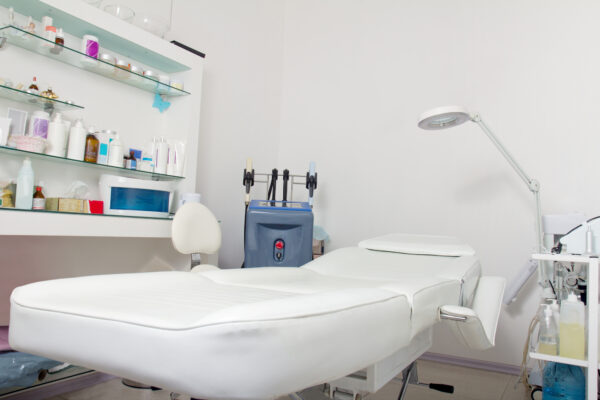
In response to the rising number of unlicensed providers, ASAE partnered with the National Unit for Criminal Information and Investigation (UNIIC) to investigate spas, clinics, and hair salons.
A procedure that is carried out without any medical expertise may result in bodily damage that is irreversible and cannot be repaired.
The Authority for Food and Economic Security (ASAE) has initiated close to 90 criminal actions against spas, clinics, and hair salons for practicing aesthetic medicine by providing botox.
ASAE issued a statement saying that they cooperated with the National Unit for Criminal Information and Investigation (UNIIC) in inspecting the facilities of spas, clinics, and hair salons as a response to the growing number of unlicensed providers who are offering these services.
For the sake of operational fairness, roughly 90 criminal proceedings have been initiated to date for the practice of usurpation of functions, resulting in the seizure of various medical devices, equipment, and other utensils used in the commission of the offense.
According to the authority, injections of botulinum toxin (also known as Botox) and hyaluronic acid, as well as the use of other intrusive treatments, such as tension threads for facial harmony, are strictly reserved for medical specialists.
The authority highlighted how lucrative these crimes are, pointing out that they need continual monitoring and severe enforcement of the law. The Authority for Food and Economic Security (ASAE) is unwavering in its commitment to the mission it has set for itself, which is to protect the honor of the medical profession and promote the highest possible levels of patient safety and care.
ASAE has worked closely with the Health Regulatory Entity (HRE), the National Authority for Medicines and Health Products (INFARMED), and the Order of Doctors (DO). Its joint mission is to make sure that only properly trained professionals provide cosmetic medical services to the public.
ASAE and its partners are sending a clear message through their combined knowledge and coordinated actions that the unlicensed practice of cosmetic and medical operations will suffer legal consequences, ensuring the protection of the general public and protecting the credibility of the profession.
If it is not handled properly, botox might pose a significant health risk. When administered by properly qualified medical personnel, Botox is both risk-free and effective. They are aware of how to convey information in such a way that it has the maximum impact.
Dentox is a training program that teaches medical professionals, how to inject Botox effectively and safely. For additional information about online and in-person patient training courses, visit https://dentox.com/botox-training/ and https://dentox.com/live-courses/, respectively.





